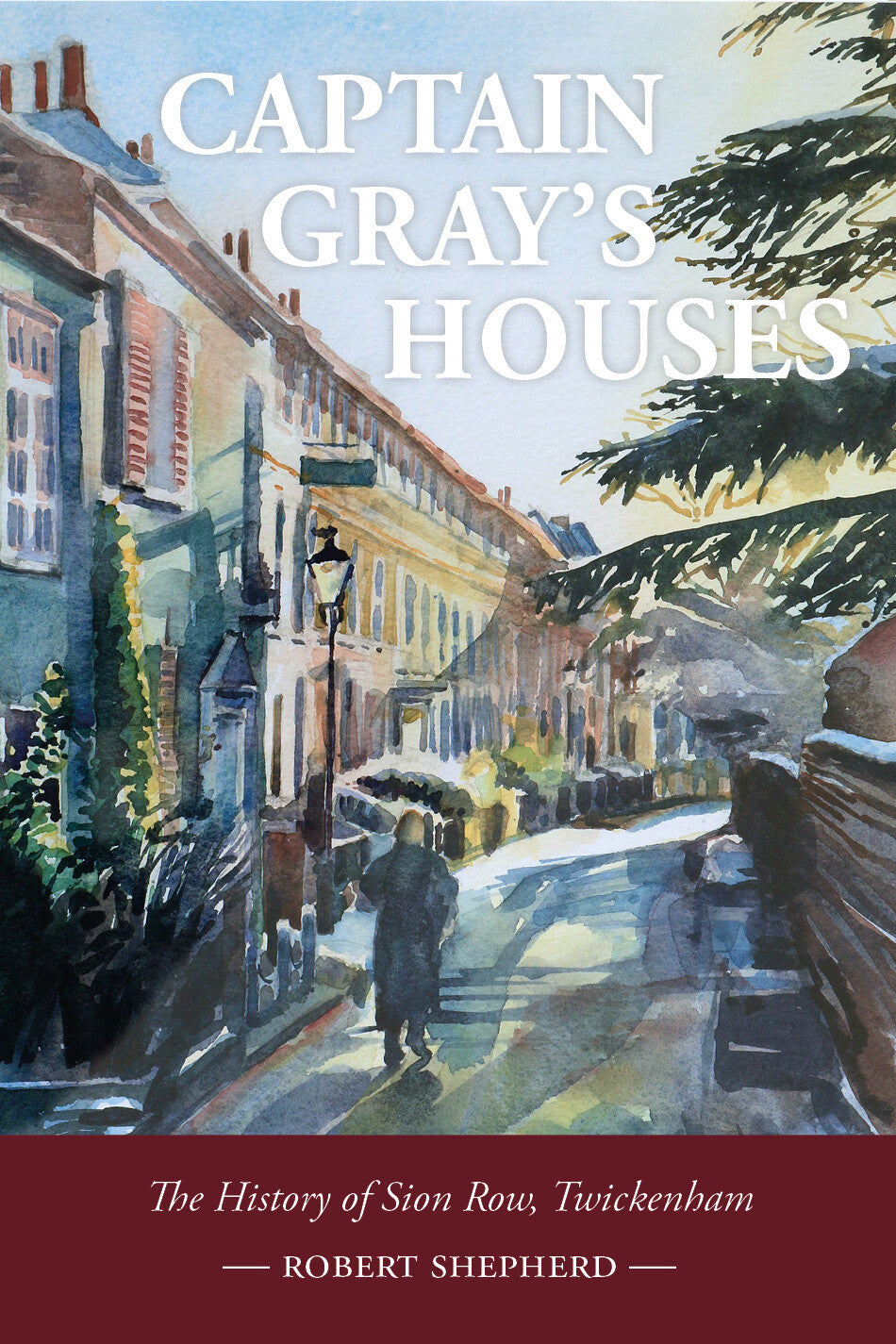Twickenham is known today as the home of rugby, but its heyday could be said to be in the eighteenth century, when first Pope and then Horace Walpole made it their home there. Captain Gray, a naval officer, acquired plots of land close to the river in Twickenham in 1718 on which he built two rows of houses, Sion Row and Montpelier Row, which survive to this day and are much admired.
This book tells the story of Sion Row, built for Gray by Edward Reeves, a remarkable local craftsman, who had ambition to become an architect. It explains the features of the houses and how they were built. It then follows them through to the present day showing how they were used and what modifications have been made to them and, not least, how they survived.
We hear of the owners and the residents, many of whom have fascinating stories to tell. They are immensely diverse, some international, some purely local, some disreputable, others pillars of respectability. Their lives are put in the context of changes in Twickenham as it evolved from out-of-town retreat to prosperous commuter suburb.
Shepherd’s book throws a revealing light on the material culture of the ‘middling orders’ who played a crucial part in the growth of what became outer London. … Engagingly written, well-illustrated and beautifully produced, this is a book to be dipped into, [adding] significantly to our knowledge of the history of outer west London, and it can be strongly recommended to anyone interested in the process of suburbanisation that has slowly transformed the lives of countless Londoners over the past three centuries.
Geoffrey Tyack, London Topographical Society Newsletter
It has been a pleasure to read what would probably be classified as a work on local history that is substantial, well written and handsomely produced. The author is not a professional historian … but he writes better and more interestingly than many academics. This is a welcome addition to the literature of the Georgian building world, not just for those interested in London’s history but for shedding light on the entrepreneurial and collaborative nature of so much eighteenth-century urban development.
Charles Hind, The Georgian

